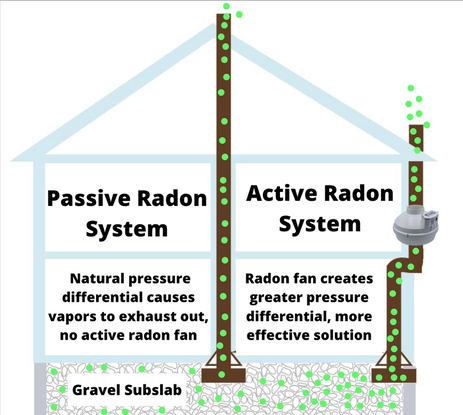how a radon mitigation system works
Radon mitigation systems use a fan to continuously pull air from the soil and exhaust it outdoors through a pipe. If youve done a radon test and found a high level of this gas in your home heres how a radon reduction system installed in your basement would work.
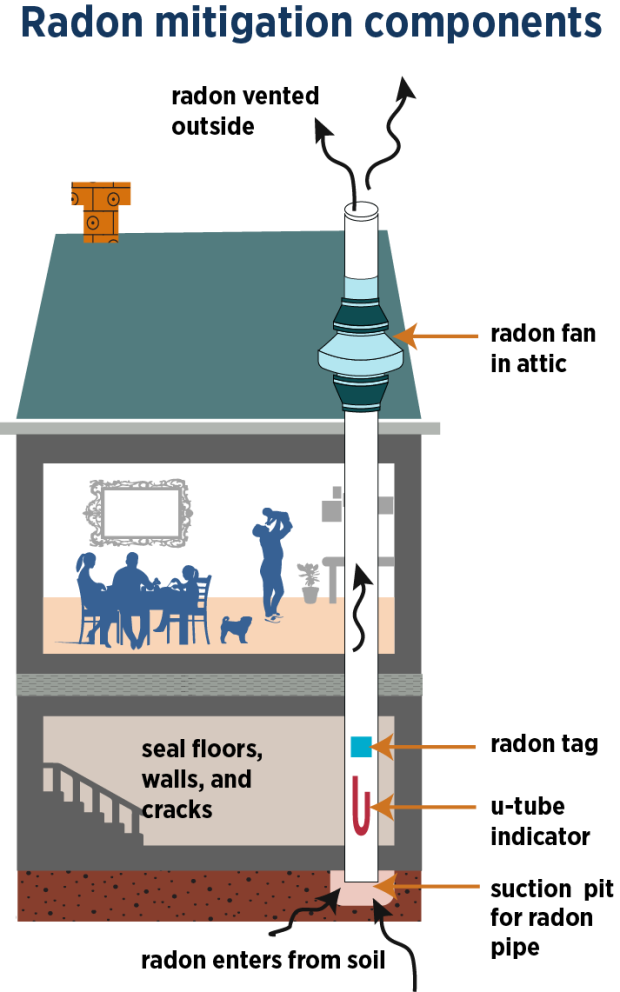
Fixing Radon In Your Home Mass Gov
If the garage attic option is unavailable the pipes can in.

. What generally happens in this system is that PCV piping is installed beneath the concrete slab in a basement or in a sump pit. Passive Radon Mitigation Systems. In addition cracks and openings in the foundation are sealed.
A fan is applying a vacuum under the membrane and the radon gas is collected and discharged outside. Get What You Need. A passive radon mitigation system is one method to prevent radon gas from entering your home.
A mitigation system will catch radon as it tries entering your home neutralizing it from incoming airflow. Radon mitigation systems use a fan to continuously pull air from the soil and exhaust it outdoors through a pipe. A radon system fan and piping system then draws the radon from under the membrane and vents it outdoors.
Active systems are exactly like passive systems with one very noticeable exception. Heres how the Dilution Solution works. The pipe can either run inside or outside the home and discharges outside away from the windows and openings.
As noted one of the first things you should be doing upon locating a radon mitigation system in a home youre considering is confirm its quality both at. Get Up to 4 Quotes Today. Occasionally more complex installations may take 2 or more days.
A fan see photo above is installed in the PCV pipe to create suction or negative pressure of the radon. A passive system reduces radon levels using natural air pressure differences. In most situations the attic installed radon mitigation system is routed through the garage to the attic space above it.
The primary benefit is reducing the risk of developing lung cancer. Ad Safety Starts With Quality Products at Grainger. This too is a bit more rare than the radon.
Exhaust ducts are set close to the floor to exhaust radon-contaminated air out through the piping. This is typically installed when a property is being constructed. Your radon mitigation fan will be running twenty four hours a day seven days a week for as long as you live in the house.
This mitigation system can also be performed on private well to reduce the radon level in the water system of your home. EPA generally recommends methods which prevent the entry of radon. This system usually performed by depressurizing the active soil but for some rare areas pressurization or air exchange can also be performed.
There are a few approaches to radon mitigation but one approach far surpasses the others in terms of overall cost effectiveness and addressing the radon issue before it enters the structure in the first place. Radon Systems installed through the attic space will hide the radon system from view and offer better protection from the freezing and thaw cycle outdoors. PVC pipe is run to the location of the fan.
Many of our upcoming sections will focus on how to assess and value the radon mitigation system thats present if you find one. Some techniques prevent radon from entering your home while others reduce radon levels after it has entered. An active radon mitigation system uses a fan to remove radon.
This gas is sucked out from below the concrete floor or crawl space through the venting pipes and is safely delivered outdoors this is also known as sub-slab. However doing so requires a careful assessment by the mitigation specialist. Radon mitigation is a process which reduces the indoor levels of radon gas.
The basic concept of radon mitigation is to reduce the levels of radon gas within a structure. Homes with water control systems such as sump pumps French drains or an exterior loop of buried water-collection pipe can be effectively mitigated by connecting the active soil depressurization system to the existing water control system. This suction depressurizes the sub-slab area of the basement so that radon is more likely to go through the mitigation system than into the basement.
Attic Installed Radon Mitigation Systems. What are the benefits of radon mitigation. Ad Free Radon Removal and Mitigation Cost Estimates.
A typical radon mitigation system is installed within a day depending on various factors. Why Radon Mitigation is Worth the Cost. Qualities of a Properly-Installed Radon Mitigation System.
During a recent inspection of a newly constructed home inspector Paul discovered the required passive radon mitigation system was not installed. How quickly do radon mitigation systems work. Ad Waterproof dry out your basement.
Is radon mitigation worth the cost. There are several methods that a contractor can use to lower radon levels in your home. The pipe can either run inside or outside the home and discharges outside away from the windows and openings.
The fan creates a negative pressure zone under the house. The source can be a sump-pit cracks in the basement floor or something else entirely. The fresh air appliance pulls in fresh outside air to dilute the inside air therefore lowering radon levels.
Another potential benefit of these systems is reduced infiltration of moist soil air with the radon which may reduce the humidity level in the basement. In addition to indoor air quality radon mitigation can be performed on a private well to reduce radon levels within the private water system. Seals inside the concrete against water vapor and radon.
This concept is known as active soil depressurization. In other words the specialist must find precisely where radon is entering the home. Radon gas gets collected in this zone and is vented out through the systems ducts forced by the fans suction.
Despite the cost of installing a system youll probably find. Radon mitigation systems use a fan to continuously pull air from the soil and exhaust it outdoors through a pipe. In addition cracks and openings in the foundation are sealed.
Soil suction for example prevents radon from entering your home by drawing the radon from. Take a look at the illustration above. Radon mitigation is most often times performed by active soil depressurization however in some more rare instances radon mitigation can be performed by pressurization or air exchange.
Standard radon reduction systems are usually effective within 24 hours and maintain low levels as long as the fan is operating.

2022 Radon Mitigation Cost Remediation System Testing Cost

2022 Radon Mitigation Cost Remediation System Testing Cost
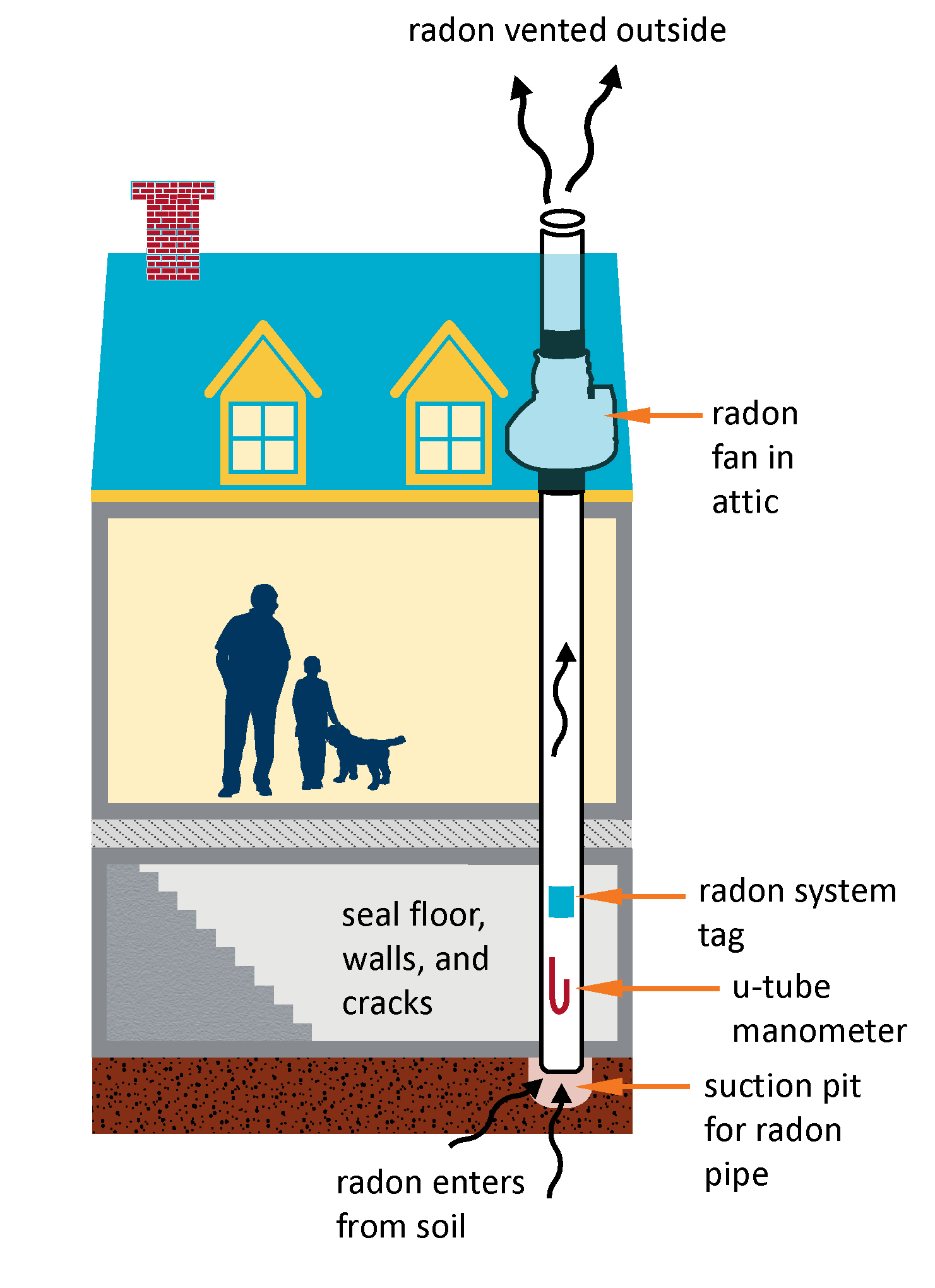
What Is A Radon Mitigation System Can It Improve Your Air Quality

Radon Mitigation System Benefits Of Installing In Attic

Reducing Radon In Your Home National Radon Program Services
Radon Your Uninvited Unseen Unwanted House Guest The Navage Patch

2022 Radon Mitigation Cost Remediation System Testing Cost
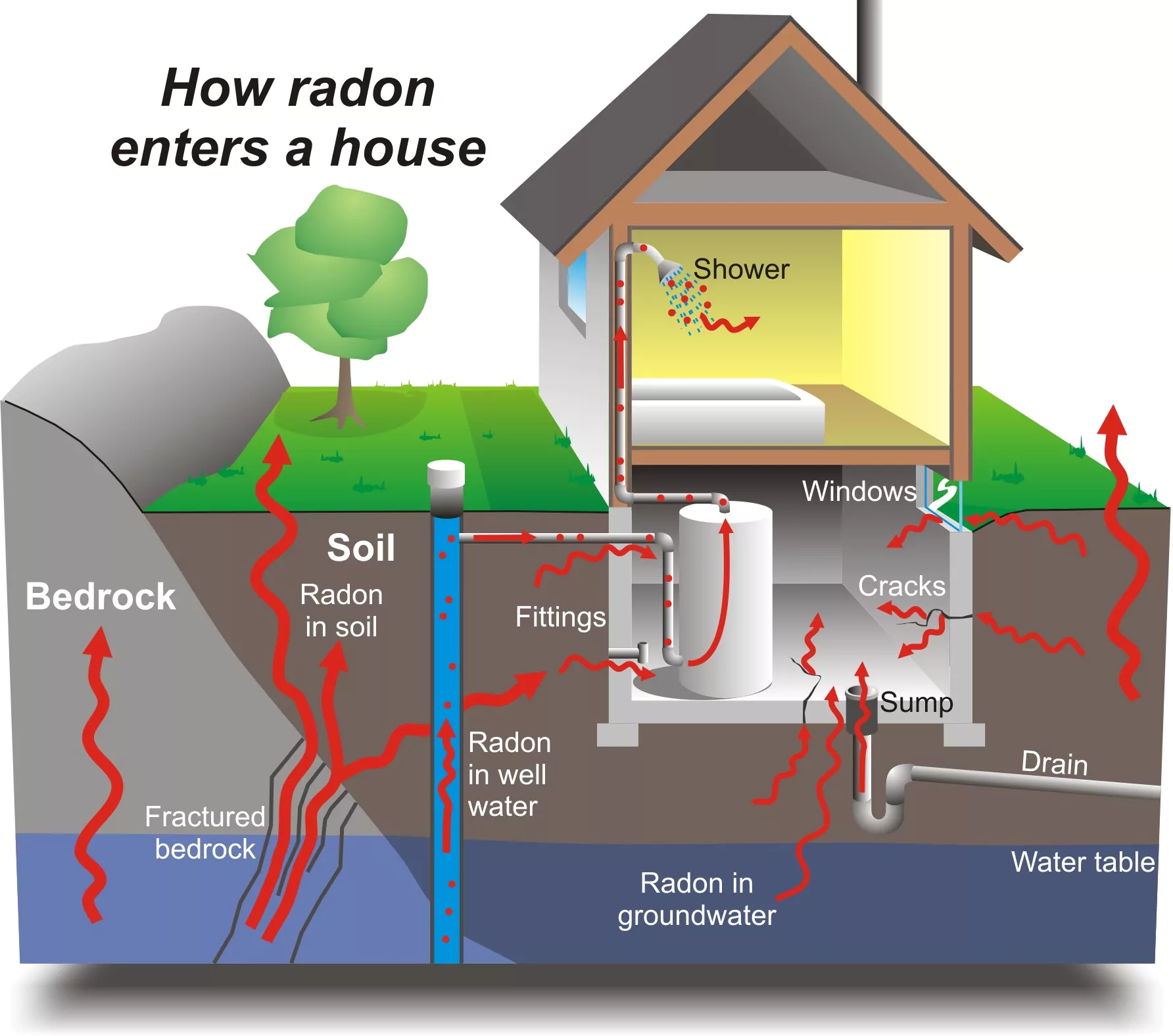
Radon Testing How To Do A Radon Test And Remove Dangerous Radon Gas The Money Pit

Radon Mitigation What You Need To Know About Diy Mitigation

Exterior Radon Mitigation System Installation Radon Mitigation Radon Mitigation Diy Radon Gas

Radon Gas Remediation The Best Radon Mitigation Systems Radon Mitigation Radon Gas Radon
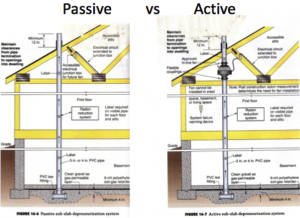
Passive Vs Active Radon Mitigation Systems What S Best Dupage Radon Contractors

Radon Gas Mitigation In Glen Allen Richmond Va Learn How We Solve Common Radon Problems In Rva Households
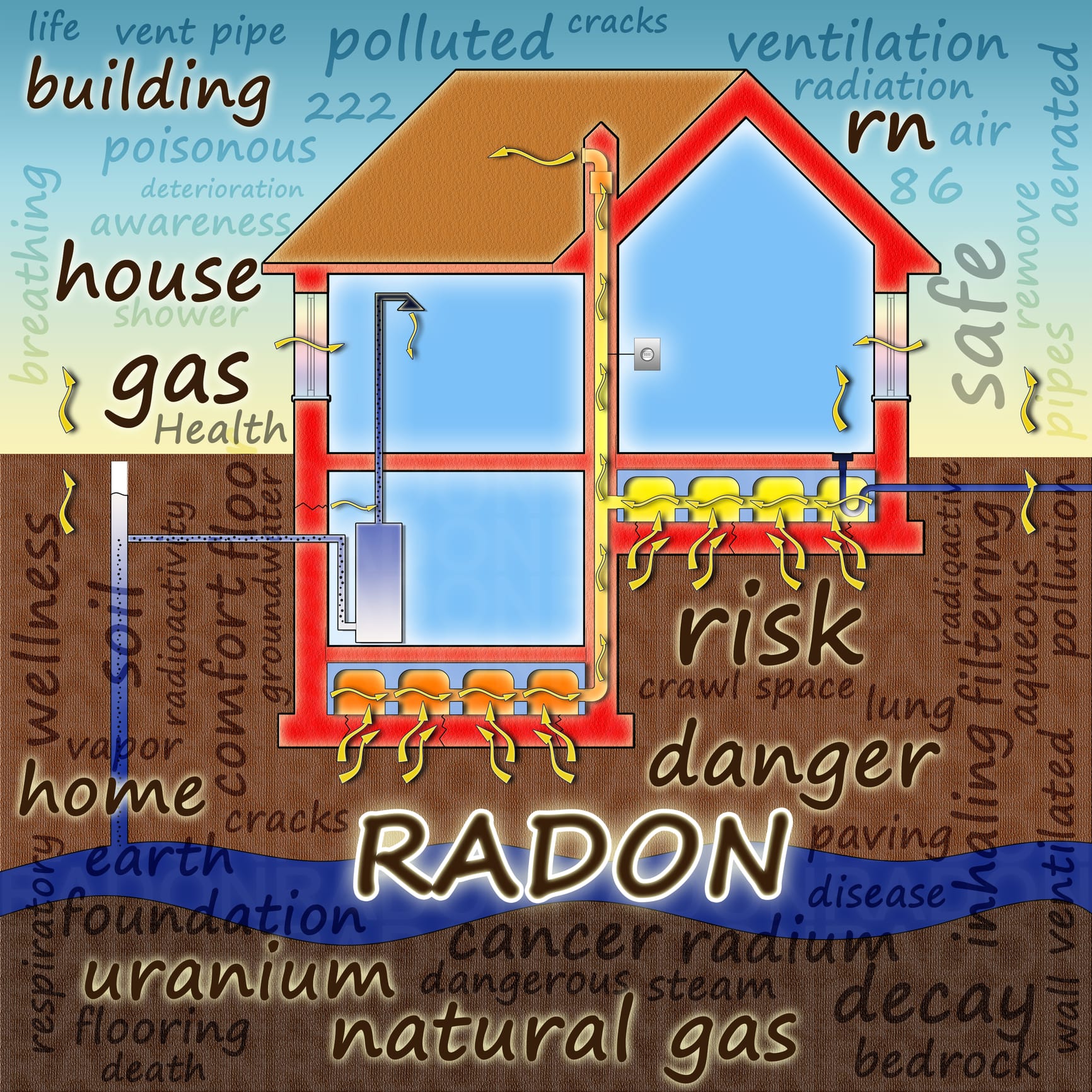
Is Your Radon Mitigation System Labeled Properly Rds Environmental
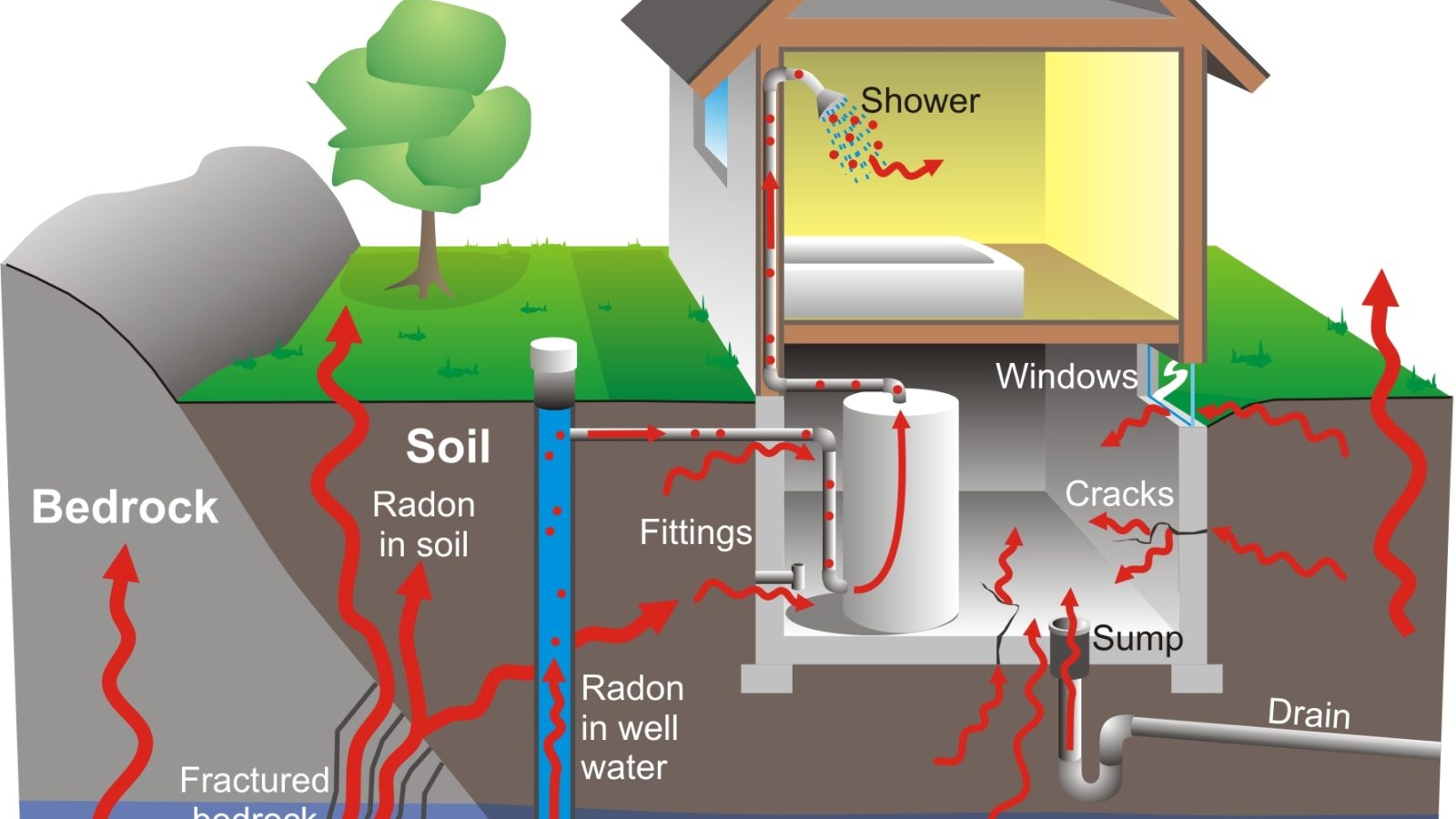
Radon Testing How To Do A Radon Test And Remove Dangerous Radon Gas The Money Pit

Radon Mitigation So You Have Radon Now What
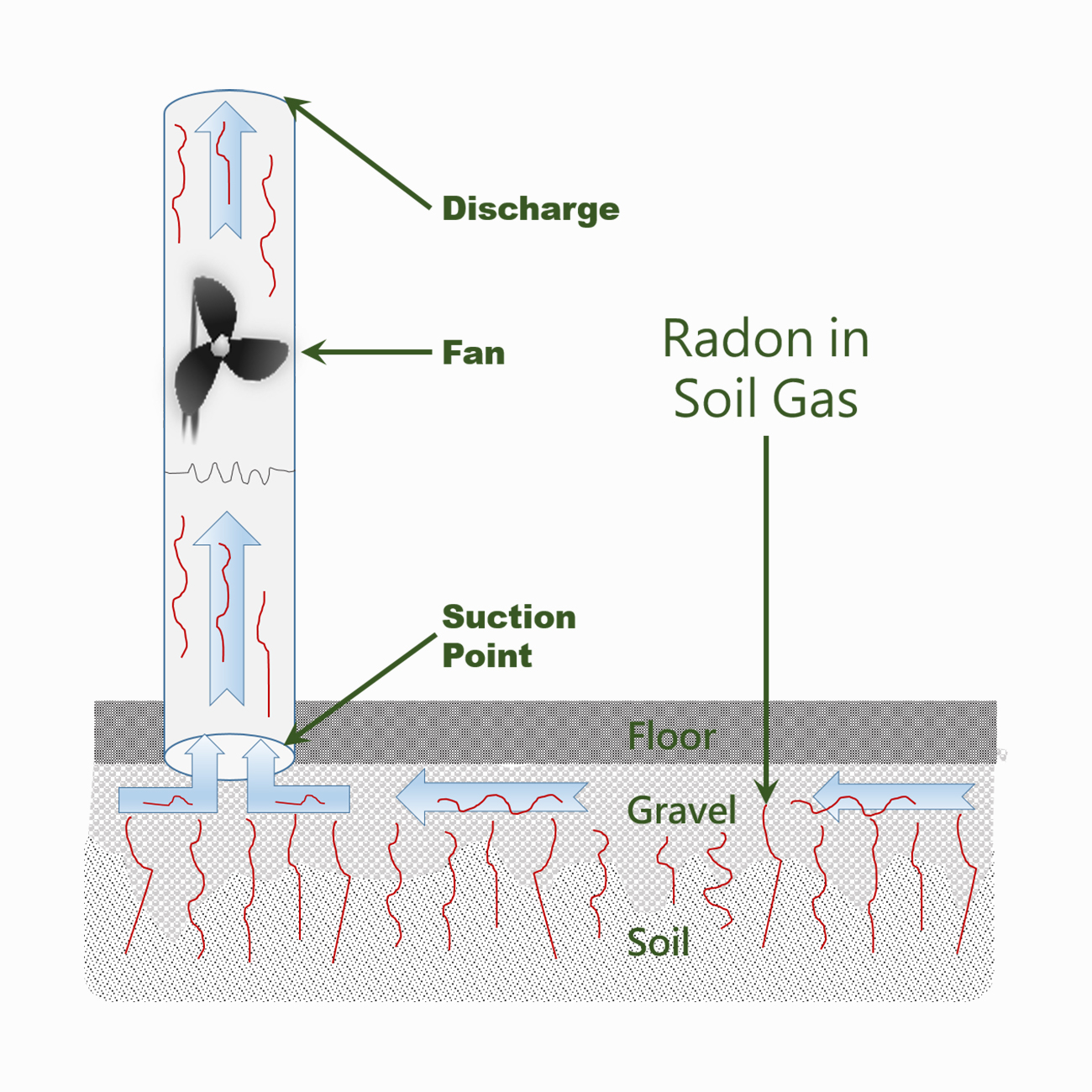
How They Work Dupage Radon Contractors

Radon Gas Reduction How To Remove Radon Hazards In Buildings Radon Mitigation Or Remediation Procedures
